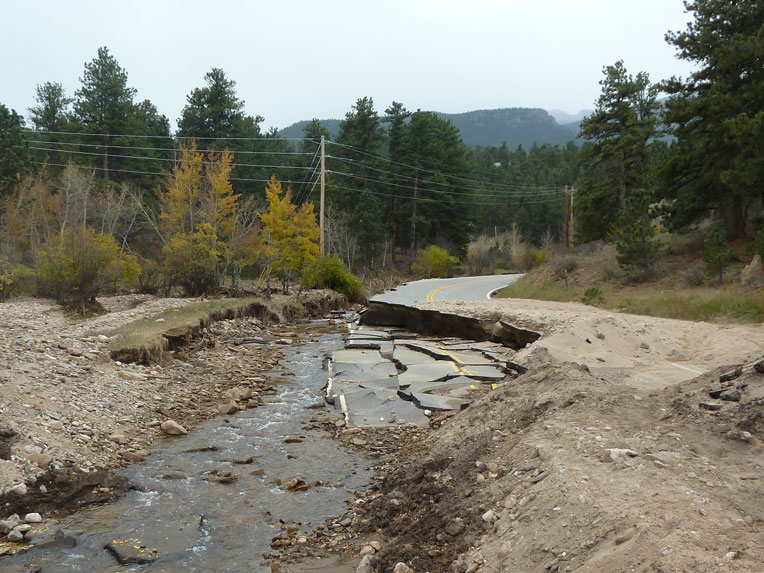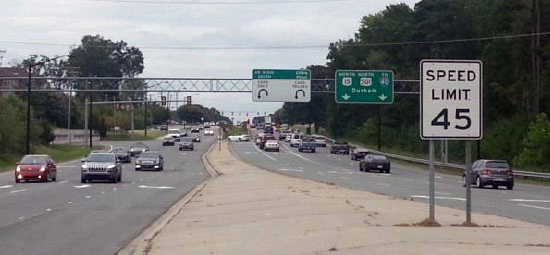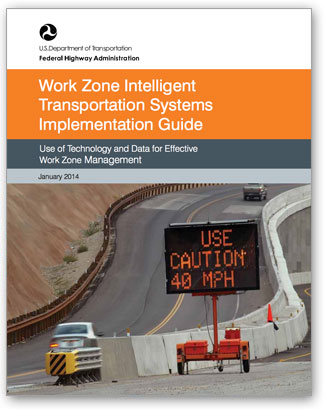August 27, 2015
Innovation of the Month: Smarter Work Zones
Many highway agencies use technology applications such as queue and speed management to dynamically manage traffic in work zones. Through Every Day Counts, the Federal Highway Administration is encouraging broader adoption of technology applications as a smarter work zones strategy to improve safety and reduce congestion.
In Massachusetts, technology applications helped mitigate the traffic impacts of a project to rehabilitate Boston’s Callahan Tunnel. The Massachusetts Department of Transportation shut down the tunnel from December 2013 to March 2014 to do the work and set up three alternate routes for drivers.
Using real-time data from intelligent transportation system infrastructure, the agency worked with the state police to monitor conditions during peak travel times and used message boards to notify motorists of delays and guide them to the best travel routes. Delivering information in real time helped drivers make informed decisions and reduced negative feedback.
For key steps in deploying ITS in work zones, read FHWA’s Work Zone Intelligent Transportation Systems Implementation Guide.
FHWA will offer a smarter work zones webinar series over the next few months. Register now to participate from 1:30 to 3 p.m. ET on September 9 in the first webcast—an overview of the project coordination and technology application strategies for smarter work zones promoted in EDC-3.
Colorado Project First to Use Programmatic Environmental Assessment
The Fish Creek Public Infrastructure Repair project is the first to use Colorado’s programmatic environmental assessment for post-disaster repair, which provides a streamlined assessment approach using a checklist. FHWA and the Federal Emergency Management Agency are collaborating on the 1.7-mile project, which consists of road and shoulder work and repair of public access roads and a multiuse trail. FHWA, Federal Lands Highway and FEMA developed the programmatic environmental assessment in 2014 in response to 2013 flooding that caused damage along the state’s Front Range from Colorado Springs to Fort Collins.

FHWA and FEMA collaborated on the Fish Creek Public Infrastructure repair project using a streamlined assessment approach. Photo: U.S. Army Corps of Engineers, Omaha District
New Mexico Tribe Deploys Innovative Contracting Method
The Pueblo of Acoma Tribe in New Mexico is requesting proposals for a suite of construction projects using the construction manager/general contractor project delivery method. The projects include major work items such as roadway construction, earthwork, retaining walls, accelerated bridge construction, interchange construction, stabilization and paving. The Pueblo of Acoma’s goal in using CM/GC is to design and build projects in a way that maximizes the amount of project work that can be accomplished with available funding.
North Carolina Hosts Superstreet Peer Exchange
Minnesota transportation professionals traveled to Chapel Hill, North Carolina, for an August 10 and 11 peer exchange on superstreets, signalized restricted crossing U-turn intersection corridors. Regional, state and federal agency staff from Minnesota’s Twin Cities area met with their North Carolina counterparts to discuss the benefits and challenges of superstreets. The Minnesota group visited projects in Chapel Hill and Holly Springs and discussed potential Twin Cities corridors where the superstreet concept could improve traffic operations and safety.

A peer exchange enabled Minnesota transportation professionals to observe North Carolina
superstreet projects, including one in Chapel Hill shown here.



